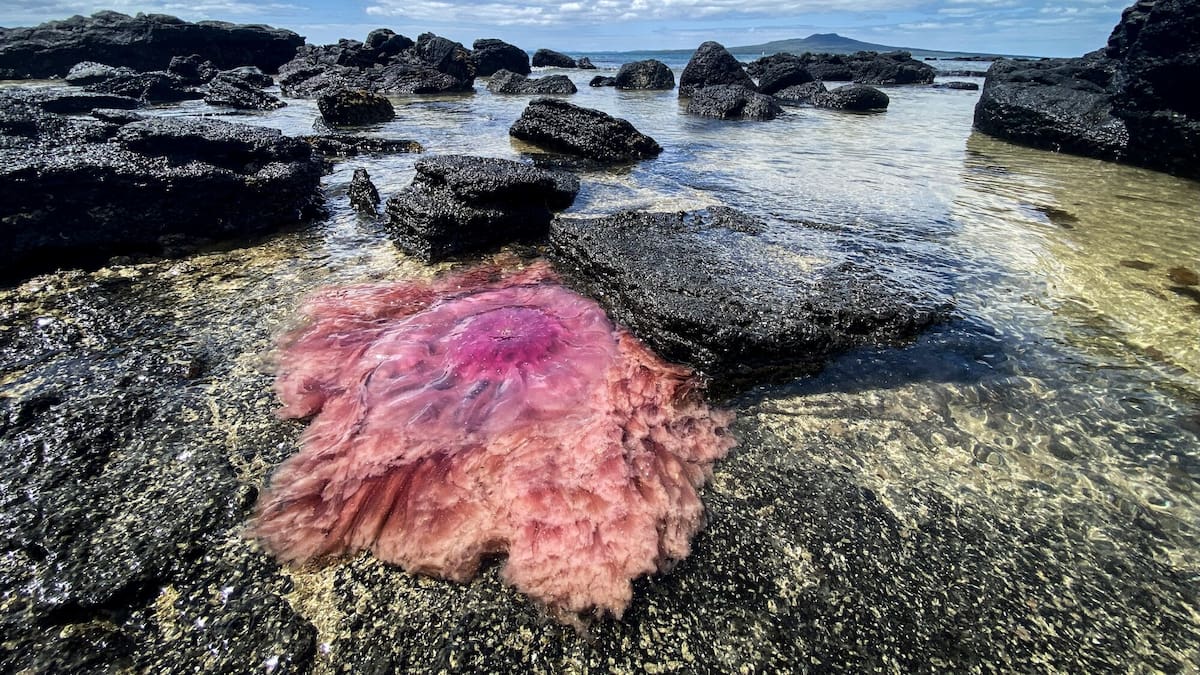Of the 35 species of jellyfish in New Zealand waters, lion’s mane is one of the most common, along with moon and spotted jellyfish, and is the largest with tentacles reaching an astonishing 36m.
“Despite being really beautiful, the lion’s mane and spotted jellyfish can produce a very painful sting, as can the bluebottle,” Gordon said, advising care around the creatures.
Even when washed ashore, tentacles have a sting that causes severe pain, nausea and swelling, according to Auckland Regional Public Health advice.
Although rarely dangerous, medical help should be sought if symptoms include numbness, difficulty breathing, symptoms of poisoning, including stomach pains, vomiting and cramps, signs of infection or worsening symptoms.
“Lion’s mane jellyfish can grow quite large – up to 2m wide and several metres long,” said Darryl Thompson, Auckland Council technical specialist environmental health.
“They are not particularly dangerous, but beachgoers should avoid them if possible. They are fairly common around NZ and stings are commonly treated with vinegar.”
For some people, a severe allergic reaction or anaphylaxis may occur, although this is very rare, cautions the service.
Avoid lion’s mane jellyfish when they wash ashore – they can still sting.
For young children and pets, the threats are more serious, and parents, caregivers and dog owners are advised to keep kids and dogs away.
Auckland Regional Health suggests flushing stings with seawater or fresh water, soaking in very warm water as soon as possible and to take pain relief medicine.
Using urine to relieve a jellyfish sting is a popular misconception. As there is no way of telling its pH and chemical make-up, it could actually make the pain worse.
“Jellyfish are enchanting, delicate creatures that should be appreciated, just not too close,” says Gordon.
Sign up to The Daily H, a free newsletter curated by our editors and delivered straight to your inbox every weekday.

